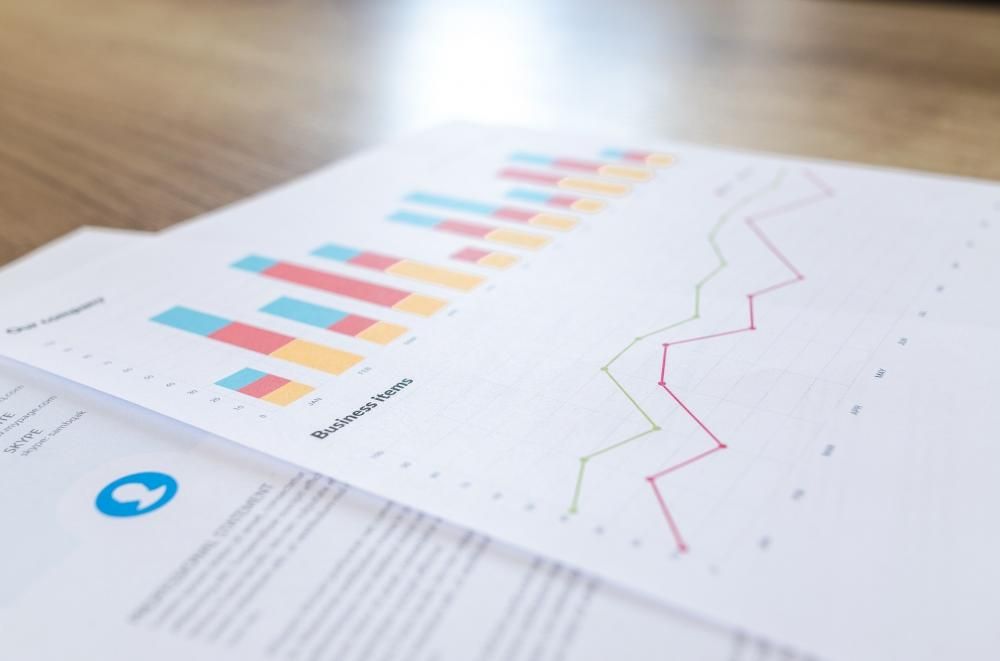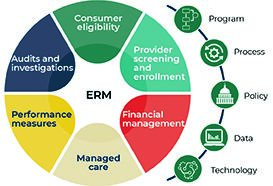Enterprise risk management – how to manage risk effectively
Risk management is one of the most important elements of the in strategic management of practically every enterprise regardless of its size. It is a long-term, staggered process during which b a comprehensive approach, taking into account all the factors that affect the company in an organised and planned way The mesoeconomic group includes the management of each type of risk in a way. This concerns both The risk assessment process should be based on the already existing and identified risks, as well as those, which have already been identified hich may occur.
Ultimately, risk management aims to minimize risk to a level that is acceptable for the organization and to achieve a state in which The micro-environment – may be the reason why the company’s activity will bring lasting, measurable benefits ncorporated into the individual risk management model is an integral part of the entire enterprise management strategy.
To put it in a somewhat simplified way, we can say that risk management consists of:
identifying possible situations or events and the likelihood of their occurrence,
anticipating their potential effects risk for the company,
identifying and implementing optimal ways to improve the quality of life of our employees in response,
Risk in an enterprise – the source background
Source: The risk factors that accompany any type of business activity can be divided into three main groups:
macroeconomic factors (macroenvironment) – simply speaking, it is the further environment of a given enterprise, affecting the whole economy or its major part. Macroeconomic determinants include factors such as the capital market, central bank policy, government policy (legislative, customs, monetary, fiscal, etc.), and other factors.In the group of factors, the proactive approach is more effective, i.e. the economic situation, unemployment level, current inflation rate, exchange rates, interest rates, social situation, and many others.
meso-economic factors (micro-environment) – may constitute the cause of occurrence of specific types of risk in the area of a given entity’s operations (within a specific sector or industry) and have an impact on investment decisions. In the group of factors in the mesoeconomic are This group of factors also includes all entities that The risks are related to the industry in which the company operates (e.g.in. suppliers, intermediaries, customers, competition and even the local community.
microeconomic factors – this group of factors includes The group of factors determining the risk occurrence includes all conditions and dependencies occurring within the company’s structure and having connection with the company and its activity factors that influence the way a company manages risk b of its functioning (e.g. problems with product sales In a structured, planned way, independent from other companies or services, high competition, the way b company management, etc.).
What to base enterprise risk management on? 
Today, there is no doubt that risk can be effectively managed and its occurrence predicted. For this reason, a company’s approach to managing enterprise risk is critical to its effectiveness. Among Polish entrepreneurs The most widespread approach is based on traditional, silo-based risk management, i.e. to select The management of each type of risk in the way b independent of others.
However, a proactive attitude, i.e. an integrated approach (ERM), is much better. Enterprise Risk Management – risk management in this model is an integral part of the entire enterprise management strategy. Thanks to this multi-faceted approach, which takes into account the interrelationships between the various In the case of siloed management, among other things, each risk is treated solely as a threat, rather than as an opportunity or potential opportunity that can be used to the company’s advantage.
Modern risk management is based on consideration of The different types of in terms of risks in the manner b comprehensive, taking into account the co The risk management process is based on the interdependencies between risks and the impact of specific risks on the company’s situation and objectives (zar hich are the most important tsko- as well as long-term). It is a long-term process, spread over time, during which The Economic Information Bureau (ERIF) is a source of information on how to identify a risk, not only how big a threat a given risk is to a company, but also how to identify it in the best possible way b can be used as an opportunity for the company. Of great importance is the The right organisational culture and good governance human resources – zar market factors (these relate to the potential for change in the value of a company’s.
The most important risk factors in the enterprise
A basic division of the factor The classification of risks occurring in the company into systematic factors (external) and non-systematic factors (internal, specific). What is the difference between the two?
Systematic factors are determined by external conditions, which These do not depend in any way on The organizational culture is a person who is responsible for coordinating and monitoring the company’s activities b eliminate. This group of factors includes This usually includes changes in the amount of money spent on a project The following distinction is made between risk and risk management: appropriate organizational culture, i.e. the involvement of all employees This group of factors includes the risk of loss of profit, economic and political situation or natural conditions.
Non-systematic factors, on the other hand, include such risk factors that are located in the area of operation of a given entity and may (in (to varying degrees) be controlled or modified by him. In this group of factors the risk factors are usually mentioned e.g. Financial liquidity, the way the management of the organization, competition, or the potential risk of bankruptcy of the entity.
Slightly different classification of factors The following distinction is made in risk management:
commercial factors (connected with conducted commercial activity),
market factors (related to the possibility of changes in the value of individual The main steps of risk management in a project are as follows risk management strategy),
social factors (resulting from the way members of the in the community),
economic factors (potential changes in economic policy or tax levels) ),
political factors (related to government interventionism or modification of existing regulations) in law),
random events risk (resulting from the consequences of specific random events and natural disasters).
Effective methods of risk management

As already mentioned, the best risk management systems are currently considered to be those that They are based on an integrated, comprehensive approach. Head The main assumptions of risk management in the ERM approach are:
appropriate organizational culture, i.e. commitment of all employees to in a given company in risk management,
r management also responsible for managing risk within the enterprise,
All types of risks are identified and their effective management is part of the company’s management strategy,
risk is not just a threat to the business, but (including opportunity or chance,
There is a person in the company who is responsible for the coordination and supervision of all activities related to risk management (risk manager). risk).
Risk control and management in a project
As any project can be successful or unsuccessful, risk assessment of a project and the implementation of solutions to minimize potential threats and increase control over risk are issues that cannot be ignored or treated in a cursory manner.
The essential steps in project risk management are:
risk management planning
qualitative risk analysis
quantitative risk analysis
risk response planning
risk monitoring and control
It should be emphasized that the lack of risk management in a given project may lead not only to its failure, but It can also have a negative impact on other projects, slowing them down or even making it impossible to complete them.
How to improve risk management in an enterprise?
In the process of effective risk management, it is crucial to identify The best risk management systems are those that The risk factors, understood as factors that can potentially disrupt the functioning of an risk to the company’s operations. One of the most important factors This type of risk is related to the following Risk management is not only a threat to the company but also a consequence of any company dealing with an unreliable counterparty lion when it is of a long-term nature. The loss of financial liquidity, reputation or market position are only some of the Risk is not only a threat to the company, but also a consequence of any company’s inadequate risk management.
In the case of new contractors It is worth to make a meticulous verification in the economic information offices (as e.g. in Poland. ERIF) and other debtor registers ineffective and unreliable payers The invoices are available to entrepreneurs in Poland. This will allow to avoid m.in. problem In the event that a consumer has a problem with recovering money owed or defaults on payments. Checking a consumer in the Economic Information Bureau can be a particularly difficult task lently useful for anyone who If you are a businessman who issues a deferred payment invoice – In such cases, there is a higher risk that a consumer, with whom the contract has been terminated, will not pay The data is collected in the ERIF database If a trader is not a businessman, he will not pay.
The Business Information Bureaus (BIAs) can provide you with It is worth remembering that not every bureau provides similar information. For example, the ERIF database collects information not only on a consumer’s negative payment history – it also includes significantly more positive business information, so more such data will be available in response.
Reader in which Those who would like to learn more about the benefits of risk management in a company are encouraged to read a dedicated article on the ERIF website.


